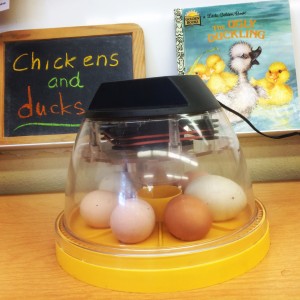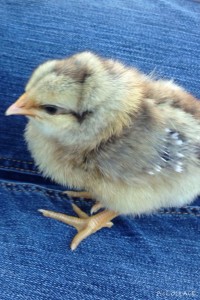
The chicks have hatched! After 22 days in the incubator the big day finally came. We had been worried because the incubator was left open on day 14 as the class went on a field trip to the Zoo. The eggs were left in the cold for more than 6 hours! A quick internet search revealed that chicks can survive several hours without incubation. We candled the eggs but there was not much to see on day 14. Since we had two duck eggs we candled those as well and the little ducks were paddling in their eggs!

On day 21 we came in on a Sunday to make sure the chicks were doing fine. Nothing was happening. What in the world could we tell the kids? We sang to the chicks (really) and finally we heard a faint chirping. The next day things started to get going. We first saw a small hole. The eggs started shaking and rolling. We could also hear them chirping in their eggs pretty loudly, but no chicks yet. It is very tempting to help a chick out of the egg at this point. You can see the beak through the pip. Their struggle seems so real. However helping a chick hatch is usually fatal. It really makes you think about struggle in general. Maybe there is more purpose in it than we realize.
It took an additional 24 hours for all of them to hatch and it took all of our restrained not to intervene and help. Now they are chirping and running around in their nesting box and our yard. We take them into the school garden and let them peck in the dirt and fluff their feathers in the sun. What a treat for the end of the school year!
If you are interested in incubating your own chicks you can find more information right here.


